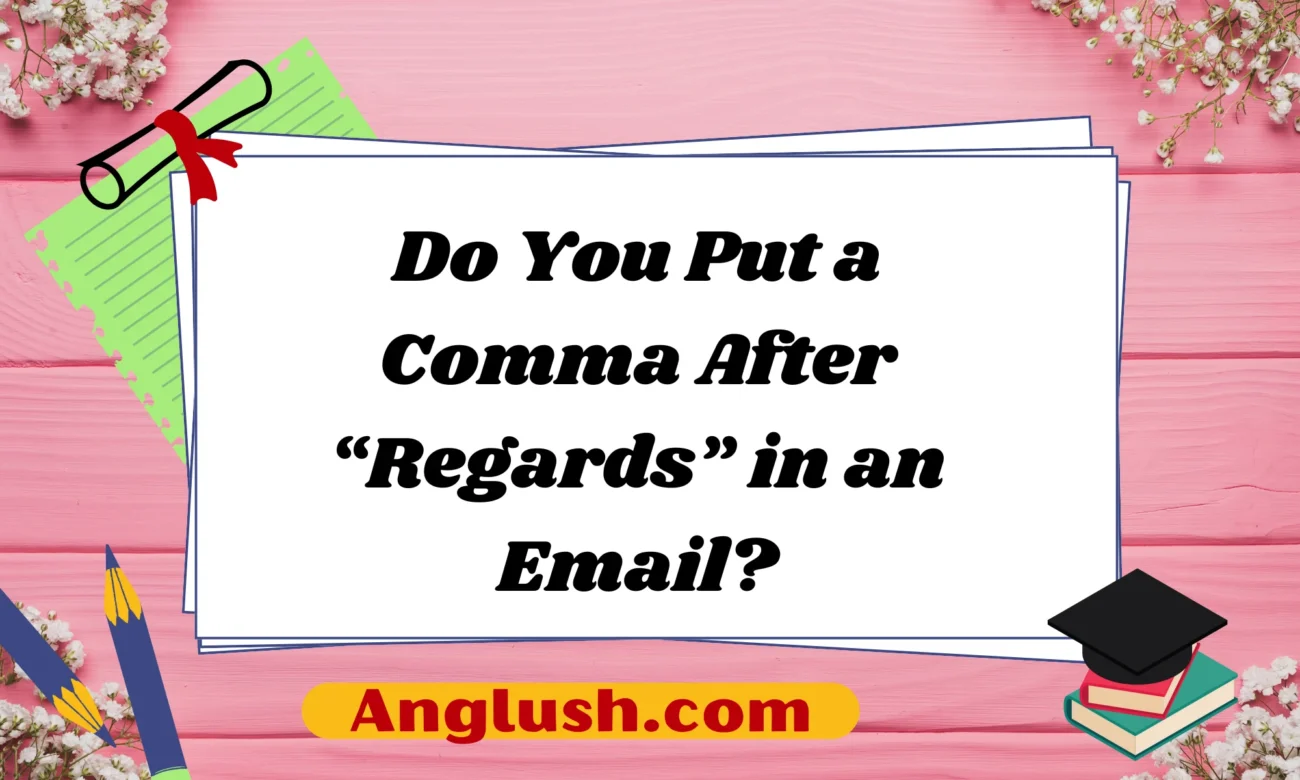Introduction
When writing an email, especially in professional or formal settings, knowing the correct punctuation and closing phrases is essential. One common question people have is: Do you put a comma after “Regards” in an email?
The short answer is yes—you should place a comma after “Regards” when it appears as the closing phrase of an email. However, the choice of closing phrase itself can affect the tone of your message. In this article, we will not only clarify punctuation rules but also explore alternative ways to end an email, depending on the level of formality and relationship with the recipient.
By the end of this article, you’ll have a collection of polished and professional email closings that can improve your communication skills and leave a positive impression.
Do You Put a Comma After “Regards”?
Yes, when using “Regards” (or any similar closing phrase), you should always place a comma after it. Here’s an example:
Best regards,
John Smith
The comma separates the closing phrase from your name, ensuring proper email etiquette.
Correct Usage Examples:
- Best regards,
Emily - Kind regards,
Michael - Warm regards,
Jessica
The use of a comma is a grammatical convention that follows the same rule as in traditional letter writing. Omitting the comma may not necessarily make your email unreadable, but it can look unpolished or unprofessional.
Alternatives to “Regards” Based on Formality
The phrase “Regards” is a commonly used email closing, but there are plenty of other options that may be better suited depending on the tone and context of your email. Below, we’ll explore different alternatives based on the level of formality.
1. Highly Formal Email Closings
These closings are ideal for business proposals, job applications, official documents, and emails to executives or clients.
- Sincerely,
- Yours sincerely,
- Yours faithfully,
- Respectfully,
- With appreciation,
- With gratitude,
Example:
Dear Mr. Thompson,
Thank you for your time and consideration. I look forward to your response.
Sincerely,
Elizabeth Carter
2. Professional Yet Friendly Email Closings
These closings work well for workplace communication, networking, and messages to colleagues or clients you have a good rapport with.
- Best regards,
- Kind regards,
- Warm regards,
- Best wishes,
- Many thanks,
- With best regards,
Example:
Dear Sarah,
I appreciate your feedback on the project and will implement the suggested changes.
Best regards,
Mark
3. Casual Yet Polite Email Closings
These closings are suitable for less formal business emails, friendly professional relationships, or internal team communication.
- Thanks,
- Cheers,
- Take care,
- Talk soon,
- All the best,
- Looking forward to your response,
Example:
Hey Jake,
Thanks for your help earlier. Let’s catch up soon!
Cheers,
Laura
4. Warm and Personal Email Closings
These closings are best for emails sent to close colleagues, mentors, or people you have an established relationship with.
- Warmly,
- With warm wishes,
- Hoping to hear from you soon,
- Stay safe,
- Wishing you well,
- Much appreciated,
Example:
Dear Anna,
I truly appreciate your guidance throughout this process.
Warmly,
David
10 Email Closing Examples for Different Situations
To help you decide which closing phrase is best for your situation, here are 10 email examples with different tones and levels of formality.
1. Job Application
Dear Hiring Manager,
I appreciate your time in reviewing my application. I look forward to hearing from you soon.
Sincerely,
Jane Doe
2. Business Proposal
Dear Mr. Carter,
Please let me know a convenient time to discuss the proposal further. Thank you for your consideration.
Best regards,
Tom Stevenson
3. Formal Request
Dear Professor Adams,
I would appreciate any guidance you can offer on this matter. Thank you in advance.
Respectfully,
Maria Gonzalez
4. Client Follow-Up
Dear Ms. Robinson,
I hope you’re doing well. I wanted to follow up on our last conversation regarding the project timeline.
Kind regards,
James Miller
5. Networking Email
Hi Susan,
It was great connecting with you at the conference. Let’s stay in touch!
Best wishes,
Alex
6. Friendly Work Email
Hey Sarah,
Thanks for the quick turnaround on the report. I appreciate it!
Thanks,
Daniel
7. Email to a Mentor
Dear Dr. Patel,
Your advice has been invaluable to my growth. I truly appreciate your time and insights.
With gratitude,
Emily
8. Internal Team Communication
Hi Team,
Looking forward to collaborating on this project. Let’s make it a success!
All the best,
Chris
9. Follow-Up Email
Hi Mark,
Just checking in to see if you had any updates regarding the proposal. Looking forward to your response.
Talk soon,
Olivia
10. Thank You Email
Dear Mr. Bennett,
Thank you for your support and guidance throughout the project. I truly appreciate it.
Much appreciated,
Rachel
How to Choose the Right Closing Phrase
Selecting the best email closing depends on three key factors:
- Formality: Consider how formal your email needs to be. A business proposal or job application requires a more professional closing, while an email to a coworker can be more relaxed.
- Relationship with the Recipient: Are you writing to a client, a colleague, or a friend? The level of familiarity should guide your choice.
- Tone of the Email: If your message is serious, use a formal closing. If it’s a lighthearted email, a casual closing works best.
Conclusion
Using the correct email closing is an important part of professional and personal communication. While “Regards” is a widely accepted and versatile closing, there are many alternatives that can better match the tone and intent of your email.
No matter which phrase you choose, always remember to include a comma after your closing statement to maintain proper email etiquette.
By selecting the right closing, you ensure your message leaves a positive and professional impression.

